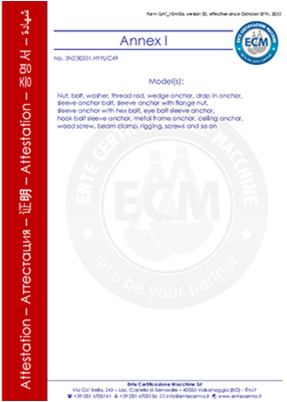Nov . 20, 2024 19:32 Back to list
m16 anchor bolts
Understanding M16 Anchor Bolts Essential Components in Construction
In the world of construction, the integrity and stability of structures are paramount. One of the crucial elements that contribute to this stability is the anchor bolt. Among various sizes, M16 anchor bolts have gained significant attention due to their robust performance in various applications. This article will delve into the characteristics, uses, installation procedures, and advantages of M16 anchor bolts.
What are M16 Anchor Bolts?
Anchor bolts are fasteners used to attach structures or components to concrete. The designation M16 indicates that the bolt has a nominal diameter of 16 millimeters. These bolts are typically made from high-strength steel, providing excellent tensile and shear strength. The M16 size is commonly used in heavy-duty applications, such as securing machinery, structural supports, and other elements requiring reliable anchoring in concrete foundations.
Characteristics of M16 Anchor Bolts
1. Diameter and Threading M16 anchor bolts have a diameter of 16 mm, which translates to approximately 0.63 inches. They usually feature metric threads, allowing for compatibility with various nuts and washers. The length can vary based on the application, typically ranging from 100 mm to 500 mm or more.
2. Material Composition The most common materials for M16 anchor bolts include galvanized steel, stainless steel, and carbon steel. Galvanization provides corrosion resistance, making these bolts suitable for outdoor and marine environments. Stainless steel offers superior corrosion resistance and is particularly useful in aggressive chemical conditions.
3. Load Capacity M16 anchor bolts are praised for their load-bearing capabilities. Depending on their length, material, and installation method, they can support significant loads, making them ideal for high-performance systems.
Applications of M16 Anchor Bolts
M16 anchor bolts are versatile and find applications across various sectors. Some of the key areas include
1. Construction and Structural Engineering In building projects, M16 anchor bolts are used to secure steel beams, columns, and precast concrete elements. They help maintain the structural integrity of the building by transferring loads from the superstructure to the foundation.
2. Machinery and Equipment Mounting M16 anchor bolts are often utilized to secure heavy machinery, generators, and other equipment to concrete pads, ensuring stability and minimizing vibrations during operation.
3. Infrastructure Projects Roads, bridges, and other infrastructure projects also utilize M16 anchor bolts to secure guardrails, signage, and various structural elements.
m16 anchor bolts

Installation Procedures
Proper installation of M16 anchor bolts is crucial for ensuring their effectiveness. The process typically involves the following steps
1. Drilling Holes The first step is to drill holes into the concrete where the anchor bolts will be installed. The holes must be of the appropriate diameter and depth based on the anchor bolt size.
2. Cleaning the Holes Once drilled, it is vital to clean the holes of any dust or debris to ensure a strong bond.
3. Inserting the Bolts The M16 anchor bolts are then inserted into the holes. Depending on the type of anchor bolt—whether mechanical or adhesive—the installation method may vary.
4. Securing the Bolts If using mechanical bolts, nuts and washers are tightened to secure the bolt. In the case of adhesive anchors, a curing period is necessary to achieve maximum strength.
Advantages of M16 Anchor Bolts
1. Strength and Reliability M16 anchor bolts offer exceptional strength, making them suitable for critical applications where safety and performance are paramount.
2. Versatility Their adaptability allows them to be utilized in various sectors, from construction to industrial applications.
3. Corrosion Resistance With options like galvanized and stainless steel, M16 anchor bolts can withstand harsh environmental conditions, extending their service life.
4. Ease of Installation While proper installation is crucial, M16 anchor bolts can be installed relatively easily when following correct procedures.
Conclusion
In summary, M16 anchor bolts play a vital role in ensuring the stability and safety of structures in construction and industrial applications. Their robust characteristics, versatile applications, and ease of installation make them a preferred choice for engineers and builders. Understanding the proper use and installation of these anchor bolts is essential for anyone involved in construction, as it directly impacts the longevity and endurance of structures. Whether securing beams, machinery, or infrastructure, the significance of M16 anchor bolts in modern construction cannot be overstated.


